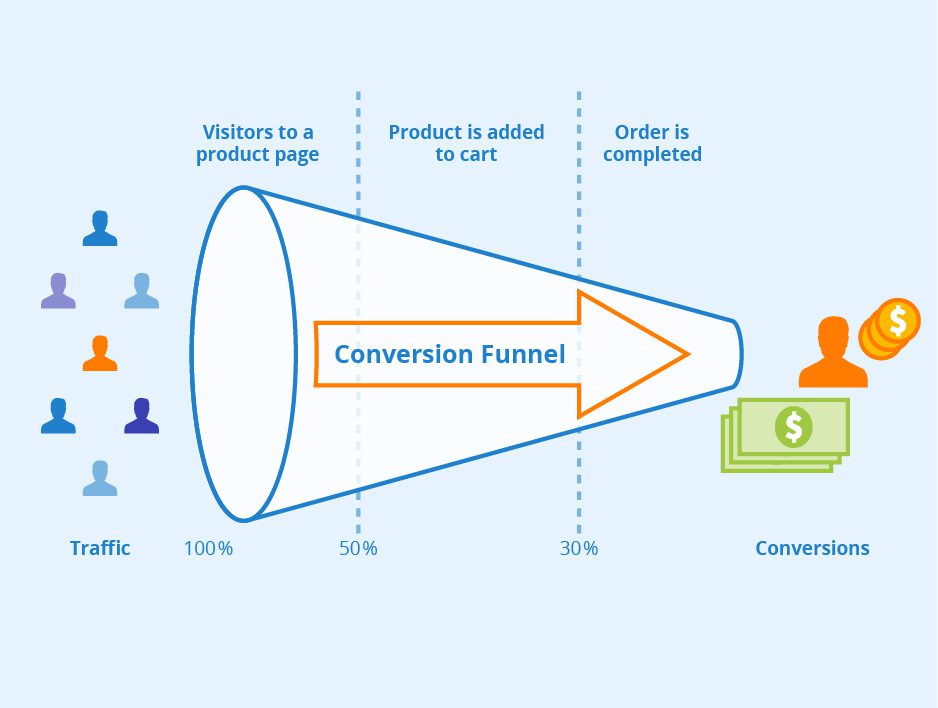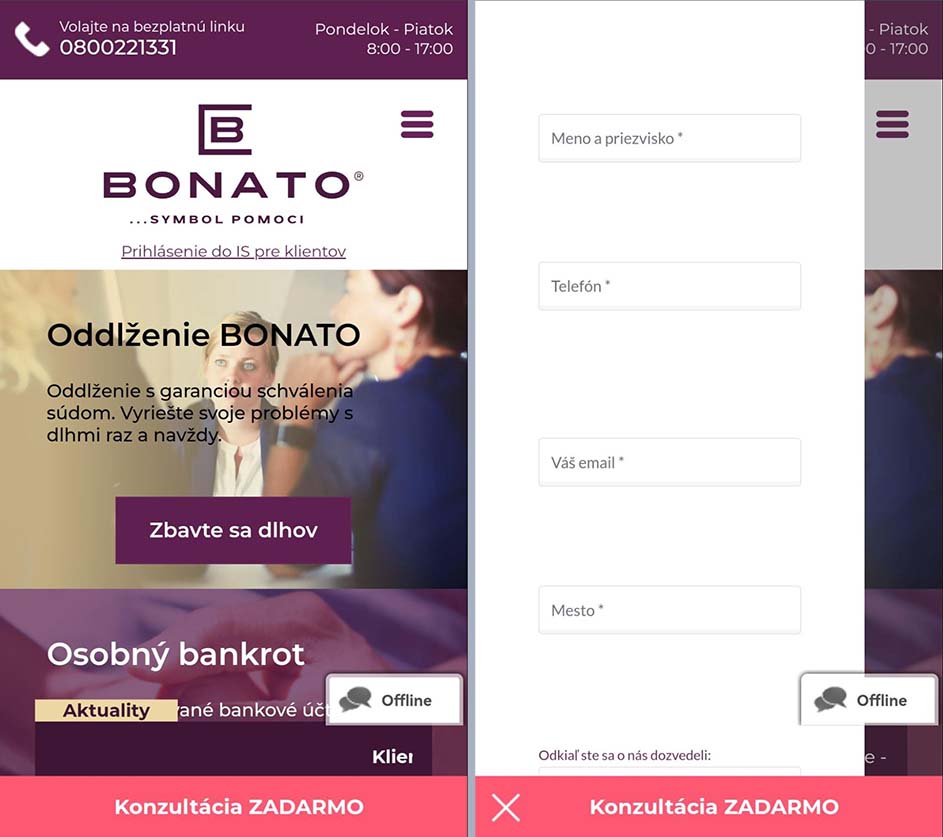What is a lead?
A lead can be explained through one sentence using a common example from everyday life. Imagine you own a stall in a marketplace.
All the people that stop by and look at what you are selling represent leads. In other words, they are the people who are interested in your stall. If you want to sell, you need quality products, a friendly salesperson and enough “browsers”, i.e. leads that can be converted into customers.
The same principle works in the online world, only intertwined with social media, internet search engines and automation tools.
However, the foundations of any business are still made up of leads, or in other words, the prospects that a smart entrepreneur converts into customers and profit.
The starting point of the conversion funnel
A lead is the part of the process when a visitor becomes a customer. Acquiring leads falls under inbound marketing, which seeks to capture a potential customer’s attention naturally and through helpful content.
Whether you’re targeting businesses or individuals, collecting leads is the first and most important step of the conversion funnel.

What does a lead look like in the online world?
In practice, you can get leads through social media forms, online questionnaires, access to unique content, discounts, coupons etc.
If you sell household cleaning products, you could create an online survey on leather seat care, for example. Opt for catchy texts and a playful format. Everyone who completes it probably has or is interested in leather sofas. That’s your target audience, and thanks to the survey, you have their contact details – you’ve gained leads.
Now send them an enticing offer for the products they need, or point them directly to a landing page with suitable products once they’ve filled out the survey.
How to go about lead generation?
Lead acquisition, or a lead generation strategy, is the creative search for opportunities to reach a potential customer. Not just any lead, but one that falls into the target group.
The B2B segment also relies on contacts
Lead generation is:
- a key part of the sales funnel for the B2B segment. Many products and services for businesses cost thousands of euros. It is unlikely that an owner will come to your website and order a service or product immediately.
- essential for e-commerce, as email marketing is still one of the most effective online marketing channels. It allows you to promote products and services even after visitors have closed the internet browser. However, ensure your emails don’t end up in the spam folder.
Where do you start with lead generation?
The basic lead generation strategy can be divided into four stages:
Capture the lead
Most visitors to the site will not return once they’ve left it. This means you have very little time to acquire the contact. Try to get an email or other contact in exchange for a valuable asset.
Utilise lead magnets
Show your visitors that you have something of real value for them in return for their contact details. Popular lead magnets include e-books, free webinars, valuable case studies or free trials and demos.
Don’t try to clutter the website with magnets. Use only the highest quality ones that also work on social media or in paid campaigns.
Direct visitors to the target landing page
If a visitor is attracted to the magnet and clicks through to a specific landing page, seize your moment. Make sure the landing page is clear, easy to understand and leads directly to the desired conversion (lead acquisition). Check the data collection form with an A/B test and select the best-performing version.
Evaluate your lead
Follow up on the leads you get and evaluate how well they fit into the target group. If you have a good CRM system, you can also assign a value to leads manually. For example, leads with a newsletter subscription are more valuable.

Which lead generation strategies work?
Both quantity and quality are key. The future of a lead generation strategy lies mainly in personalisation and social media marketing.
Content with added value
One of the most powerful and effective tactics for generating leads is to create new content constantly. We don’t just mean classic blog articles but also e-books, how-to guides, and elaborate FAQs.
Why create valuable content?
- You will be building higher search rankings in the long run and thus improving your SEO.
- If you answer your target audience’s most frequently asked questions, you’ll get the interest and traffic you need (leads).
- More content also means you have more to feed your social media and branding campaigns with.
- Quality content generates roughly three times more leads than classic outbound marketing via cold calling.
- Use video content, interactive elements, animations, infographics and quizzes.
Regular email marketing
It doesn’t matter how perfect your website is or how many A/B tests your web form has passed. You still won’t obtain an email address from most visitors. Regardless, the lead acquisition is one of the most important parts of a lead generation strategy.
How can you motivate visitors?
- Provide a free trial in exchange for filling out the contact form.
- Make downloading the case study subject to providing an email address.
- Offer a discount on the first purchase after signing up to your newsletter.
- Choose clear and understandable CTA (call to action)CTA is an abbreviation of Call to Action. In marketing, it is used to encourge a certain reaction or purchase from the visitor. CTA elements usually a... More elements.
Data platforms will help you tidy up
Process the collected data into data profiles using a suitable platform. Several external software solutions can manage vast amounts of visitor and customer data.
They create an anonymous profile for each customer in which they collect data from different sources (website, orders, newsletter, social networksWhen were the first social networks created and which network was Facebook inspired by? Which networks are among the biggest in 2023? More) in one place. You can also redirect data from your CMS system here.
Based on the data you collect, you’ll find out what your customers are looking at, where they usually are, at what time, whether they open newsletters, and so on. With well-organised data, you can create a profitable lead-generation strategy.
How do we help clients obtain leads?
We currently predominantly use the social media network Facebook to acquire leads. We promote campaigns where people click directly onto a form with pre-filled data from their profile. For example, this is how we get contact details of potential debt consolidation candidates for our client Bonato. We ourselves use Lead Ads on Facebook to get leads. We have fine-tuned our campaigns so much that there was a period when our sales department couldn’t handle all the leads coming in.

Do you want more leads?
Are you an online store in need of contact details of potential customers? Do you work in the B2B segment where cold calling is increasingly failing? Or do you have an accommodation facility and need to get your customer data in order?
We can achieve this together as part of a lead generation strategy.






